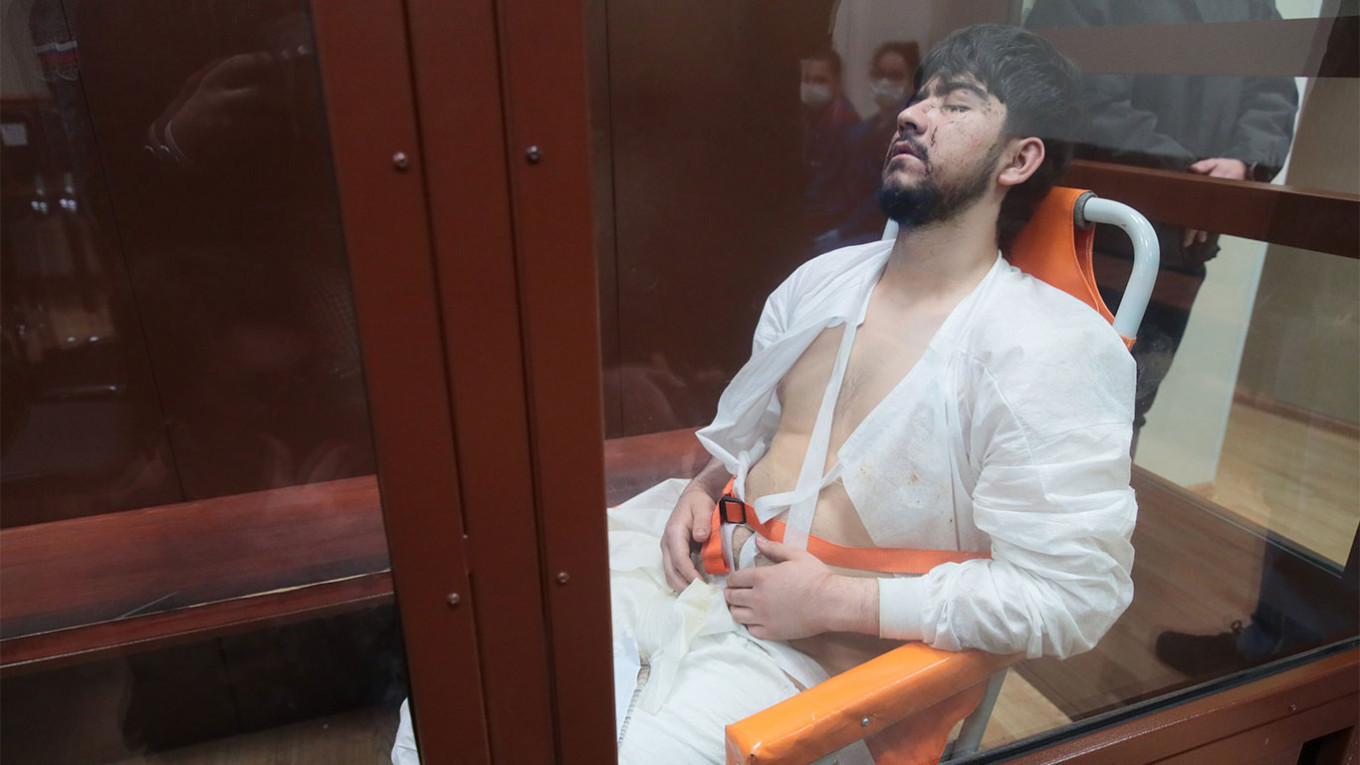In the aftermath of the tragic assault on Crocus City Hall that claimed the lives of over 130 individuals, four Tajik suspects, Saidakrami Rachabalizoda, Mukhammadsobir Faizov, Shamsidin Fariduni, and alleged ringleader Dalerjon Mirzoyev, have been presented before Moscow’s Basmanny Court.
Amidst visible signs of torture, these individuals stand accused in a case that has garnered international attention and raised questions about the persistence of extremism in Tajikistan and beyond.
The Russian government’s handling of the situation, marked by allegations of politicization and documented instances of torture against the suspects, casts a shadow over the pursuit of justice and the quest for truth.
With a history of leveraging extremism to suppress opposition voices, the credibility of the investigation comes under scrutiny, making it challenging to discern the full scope of events surrounding the Crocus City Hall attack.
However, the notion that these Tajik nationals may have been involved in an assault claimed by the Islamic State (ISIS) carries a troubling plausibility, given the region’s recent history.
Between 2012 and 2018, Tajikistan emerged as one of the leading contributors of foreign fighters to conflict zones in Syria and Iraq. Over 2,000 Tajik citizens joined the ranks of terrorist organizations during this period, with many aligning themselves with ISIS.
Some Tajik militants assumed prominent roles within ISIS, exemplified by Gulmurod Halimov, the former head of Tajikistan’s OMON paramilitary police force who rose to become the group’s War Minister.
Despite the demise of ISIS’s territorial control, the threat persisted as fighters dispersed, with some relocating to Europe while others found a new battleground in Afghanistan.
In Afghanistan, the emergence of ISIS-Khorasan Province (ISIS-K) in 2014 added another dimension to the regional security landscape. This affiliate of ISIS targeted Central Asians, including Tajiks, in its recruitment efforts, presenting a persistent challenge to stability in the region.
Operating amidst the complex web of conflicts involving the Afghan government, NATO allies, the Taliban, and other insurgent groups, ISIS-K posed a direct threat to Tajikistan and its neighbours.
The Crocus City Hall attack serves as a stark reminder of the enduring menace posed by extremism, transcending borders and defying conventional narratives of defeat.
While the immediate focus may rest on the legal proceedings against the Tajik suspects, the broader context demands a nuanced understanding of the underlying factors fueling radicalization and violence.
In the pursuit of justice, it is imperative to uphold the principles of transparency, accountability, and respect for human rights.
The international community must remain vigilant against the exploitation of counterterrorism measures for political ends, ensuring that efforts to combat extremism do not compromise fundamental freedoms or exacerbate grievances.
As Tajikistan grapples with the aftermath of the Crocus City Hall tragedy, it confronts a sobering reality: the spectre of extremism looms large, requiring sustained efforts to address root causes, promote inclusive governance, and foster resilience within communities.
Only through a comprehensive and holistic approach can the cycle of violence be broken, paving the way for a future defined by peace and stability.
This article was created using automation and was thoroughly edited and fact-checked by one of our editorial staff members
